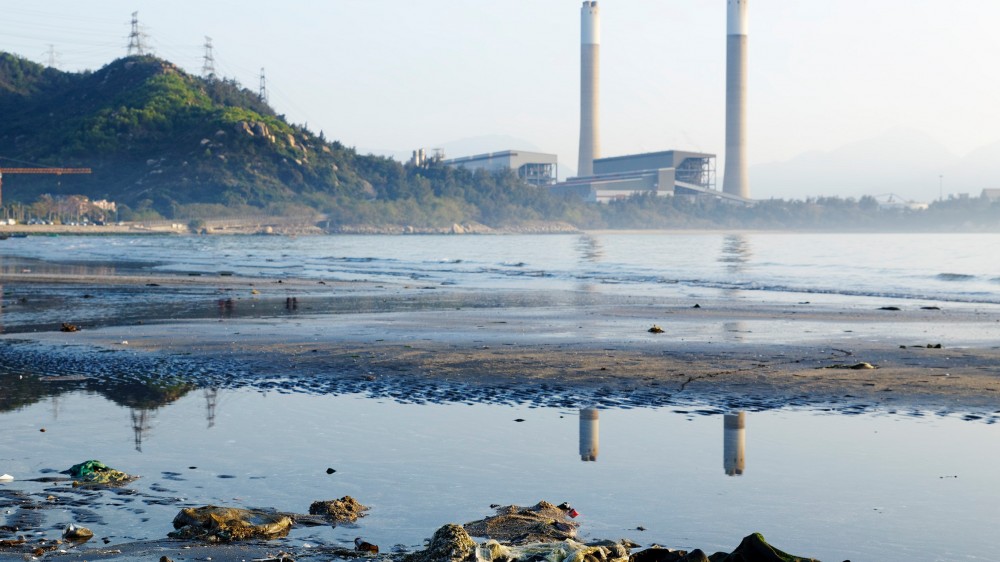Lesson #6
Energy Production and environmental impact
What is the impact of energy production on air pollution and climate change?
Fossil fuels continue to be a large proportion of global energy mix.
When fossil fuels are burned, they release nitrogen oxides into the atmosphere, which contribute to the formation of smog and acid rain. The most common nitrogen-related compounds emitted into the air by human activities are collectively referred to as nitrogen oxides. Ammonia is another nitrogen compound emitted to the air, primarily from agricultural activities, but also from fossil fuels.
The presence of excess nitrogen in the atmosphere in the form of nitrogen oxides or ammonia is deposited back onto land, where it washes into nearby water bodies. These excess nutrients contribute to pollution, harmful algal blooms and oxygen-deprived aquatic zones. Excess ammonia and low pH in these areas are toxic to aquatic organisms and affect their survival.
Different qualities of fuel contain pollutants in different quantities. Sometimes these pollutants may be reduced or removed during coal washing, oil refining. The temperature of combustion and post-combustion technologies like catalytic converters are used to capture harmful emissions. Thus there is a range of emission factors that depends on various variables. There are certain fuels that have both a larger share in terms of total emissions and in terms of emissions per unit.
Oil contributes to more than half the total emissions of nitrogen dioxide emissions.
Oil refining is the single largest source of carcinogenic benzene. The highest level of sulfur dioxide is emitted from Coal.

Natural gas results in much lower emissions since sulfur is removed after production to avoid corrosion to the pipeline transport system.
Non-productive combustion also results in carbon dioxide emissions eg direct venting of natural gas into the atmosphere.
Mining and refining uranium ore for nuclear energy and making reactor fuel demands a lot of energy. The main environmental challenge is the leftover waste including uranium and other radioactive wastes.

Hydropower dams can obstruct migration of fish to their upstream spawning areas. Fish travelling downstream can get killed or injured as water moves through turbines. The ecology and characteristics of the river can also be affected due to sediment loads, water temperatures etc.When reservoirs fill with water natural areas, farms, cities etc get flooded and populations hv to relocate.

Bioethanol and biodiesel are two types of liquid biofuels manufactured from plants to replace fossil fuels.The land, fertilizers and energy used to grow biofuel crops can be used to grow food crops. Thus economic and social effect of growing fuel crops needs to be considered. The possible rise in food prices and malnutrition and starvation increase are some of the negative societal effects.

Wind turbines have sometimes caught fire and caused bird and bat deaths, thus they do have a few environmental challenges.
The manufacturing of photovoltaic (PV) cells for solar power generation generates waste from chemicals and solvents.

What is the link between energy use and water pollution?
Energy production requires vast amounts of water. The process of energy generation through coal or gas requires the burning of fuel. This process generates a lot of heat which boils the water and emits a lot of steam which spins the turbines to generate electricity.
The water used in the coal plants gets pumped back to its source. The temperature of this water is much higher and creates thermal pollution. This high temperature increases the heart rate of sea animals and decreases their fertility.
Some wet-recirculating plants employ water-cooling systems to bypass this issue of extensive water pollution.

One of the big water pollution problems are oil spills. Mining operations often bring unpolluted waters in contact with certain mineral materials and produce an acid mine drainage.
What is the connection between energy use and climate change?
Any economic growth and development requires energy. The increasing GHG emissions are consequences of human activities. Among the many human activities that produce GHGs, the use of energy represents by far the largest source of emissions. GHG emissions from the energy sector are dominated by the direct combustion of fuels, a process leading to large emissions of CO2.
The high global dependence upon fossil fuels clearly is responsible for the observed upward trends in global CO2 emissions.
The global CO2 emissions largely depend on the three sectors, electricity and heat generation, industry and transport.
The continuing conflict between economic growth and environmental protection is because primary energy still dominates the world energy mix.
Reducing energy-related carbon emissions may require reducing the amount of fossil fuel consumption and hence may impact economic growth.

Understanding carbon footprint
The amount of carbon dioxide emissions associated with the activities of an individual/entity is known as the carbon footprint.
It includes emissions from your daily commute, diet followed, wastage, clothes and many more things.
The larger the footprint, the heavier is the strain on the environment. The first step to reducing the environmental impact is to measure the current footprint. You can use my carbon footprint calculator “Prithivi” on Google Play Store and then learn how you can offset your emissions.
Suggested Activities
- Explore case studies in real world like the Deepwater Horizon spill in the Gulf of Mexico, the burning of coal in power plants leading to air pollution and acid rain.
- Research on real- world examples to show how countries like Costa Rica and Denmark have been successful in moving away from fossil fuels.
- Track your own carbon footprint and identify areas of improvement.
Additional Learning Resources
- 11 COUNTRIES LEADING THE CHARGE ON RENEWABLE ENERGY
- What are the environmental impacts of energy?